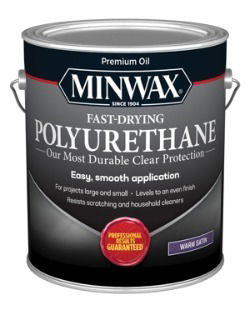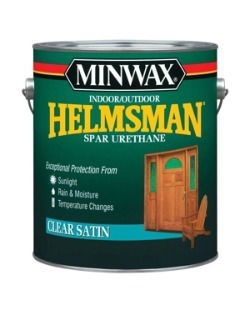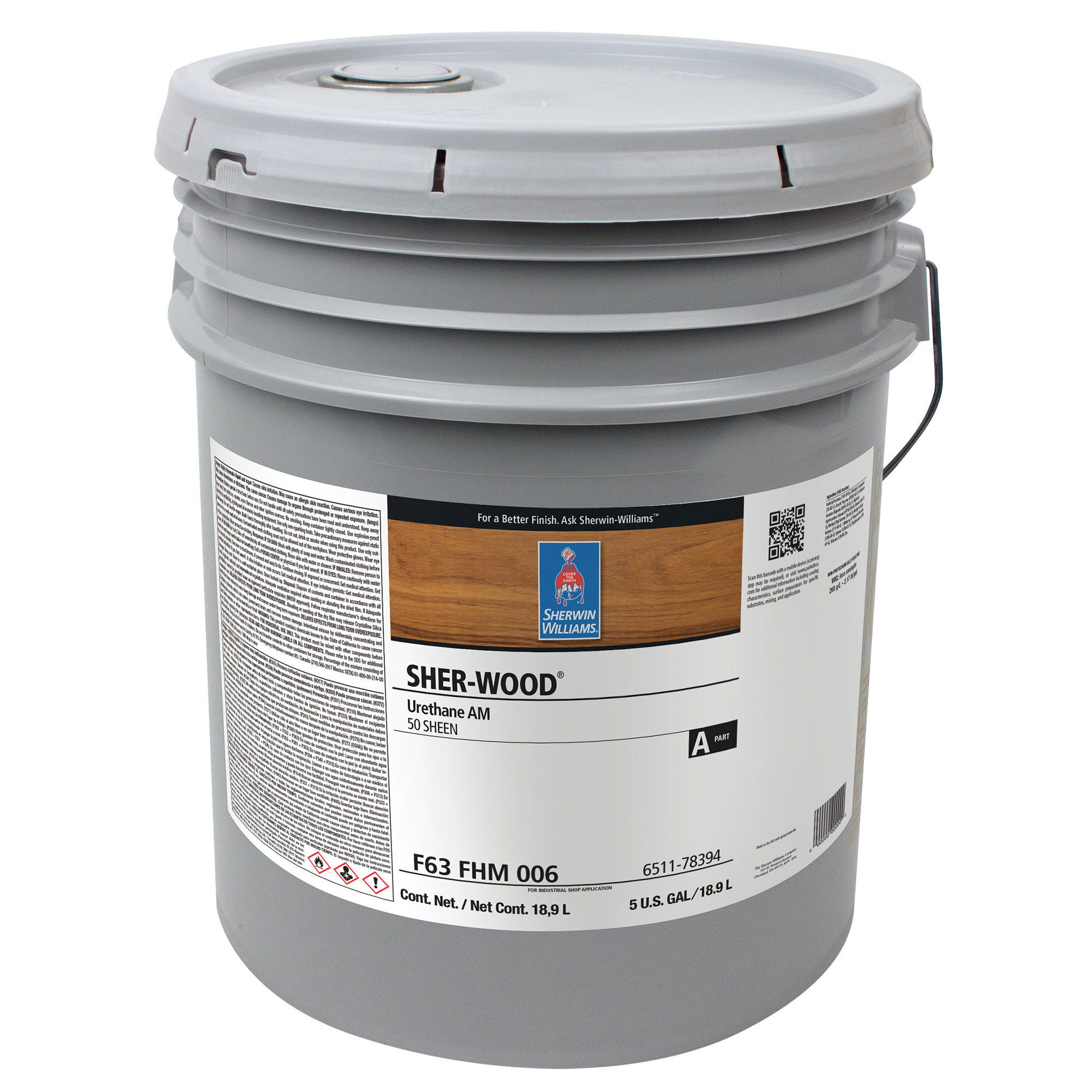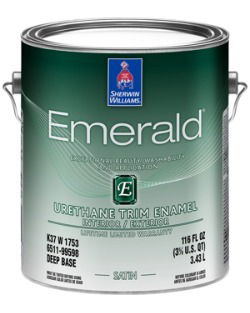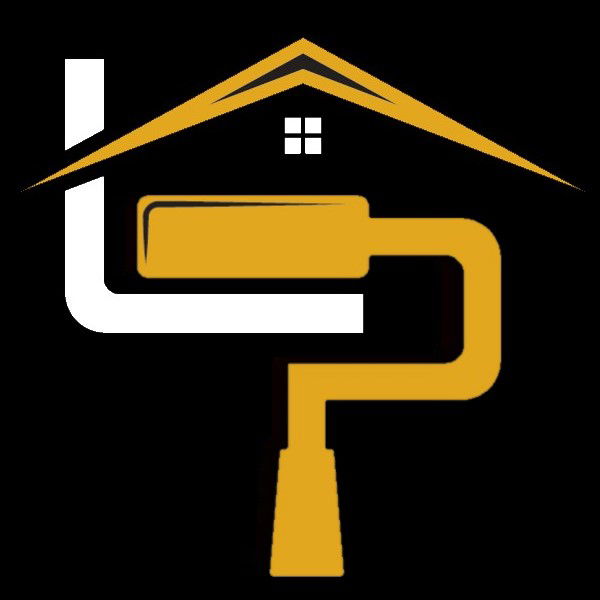Understanding the Differences Between Polyurethane and Urethane
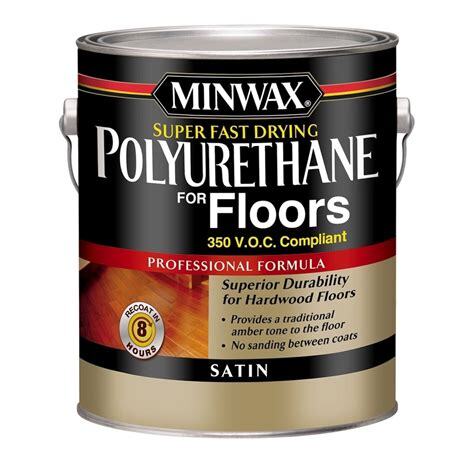
Key Features:
- Detailed Explanation of Polyurethane and Urethane: The article provides a thorough breakdown of what polyurethane is, including its uses and benefits. It clarifies the common confusion between polyurethane and urethane, highlighting that "urethane" is often mistakenly used to refer to polyurethane finishes, but actually pertains to a different chemical compound (ethyl carbamate).
- Benefits and Applications of Polyurethane: It explores the reasons polyurethane is favored in various applications, such as its flexibility, durability, and resistance to impact, chemicals, and water. The article discusses how polyurethane is used in different industries like automotive, construction, and furniture, illustrating its versatility.
- Guidance on Choosing the Right Product: The article offers practical advice on selecting the appropriate polyurethane product for specific projects. It emphasizes the importance of reading product labels, understanding specifications, and considering environmental impacts and safety measures, especially the differences between water-based and oil-based polyurethanes in terms of application, drying time, and environmental friendliness.
Introduction to Choosing the Right Finishes: Polyurethane vs. Urethane
In the realms of construction and woodworking, selecting the appropriate finishes is crucial not only for the aesthetic appeal of your projects but also for their durability and longevity. A common point of confusion arises between two terms: polyurethane and urethane. While often used interchangeably in casual conversation, these terms refer to distinctly different substances with unique properties and applications.
Defining Polyurethane and Urethane
Understanding Polyurethane
Polyurethane is a versatile type of polymer widely used in various applications ranging from insulation foams and furniture finishes to automobile parts. Chemically, polyurethane is composed of organic units joined by carbamate (urethane) links. This structure allows for a vast range of flexibility and hardness, making it an ideal choice for both rigid and flexible finishes. In the context of construction and woodworking, polyurethane finishes are celebrated for their ability to provide a hard, durable, and resistant coating that can withstand wear and tear while protecting the natural beauty of wood.
Clarifying Urethane
The term "urethane" is technically a misnomer when used to describe polyurethane finishes. Urethane, on its own, refers to ethyl carbamate, a single chemical compound with specific uses primarily in other industries, not related to the common finishes used in woodworking and construction. The confusion likely stems from the chemical linkages in polyurethanes known as urethane groups, but it's important to note that no standalone urethane-based finishes are used in these fields. When people refer to urethane in the context of finishes, they are almost always discussing a type of polyurethane.Understanding these distinctions is crucial when selecting products for your projects to ensure that you achieve the desired results and performance. Whether you are finishing a piece of fine furniture or protecting the floors of a bustling family home, choosing the right type of polyurethane finish can make all the difference in the appearance, protection, and durability of the project.
Historical Context and Usage of Polyurethane
Development and Evolution of Polyurethane
Polyurethane was first developed in the late 1930s by Professor Otto Bayer and his team in Germany, initially intended as a substitute for rubber during World War II. Since then, the applications of polyurethane have expanded tremendously across various industries due to its versatility and adaptability. In construction and woodworking, polyurethane became popular due to its exceptional durability and protective qualities, making it ideal for finishes on floors, furniture, and even in more industrial applications like insulation and sealants.
Mislabeling of Polyurethane as "Urethane"
The mislabeling of polyurethane products as "urethane" in casual conversation is not uncommon, though technically incorrect. This confusion likely originated from the chemical structure of polyurethane, which includes urethane groups (carbamate links). Over time, the term "urethane" became a colloquial shortcut to refer to products made from polyurethane, even though pure urethane, a different chemical compound (ethyl carbamate), is not used in these applications. This shorthand can lead to confusion, especially for those new to using these materials.
In Our Experience:
"In my woodwork painting projects, I always prefer polyurethane over what's often mistakenly called urethane. Polyurethane is incredibly versatile and ideal for creating durable, protective finishes that enhance the natural beauty of wood. It's crucial to understand the distinction between these terms, as mislabeling can lead to confusion and affect project outcomes. By choosing polyurethane, I ensure my projects are both aesthetically pleasing and built to last, making it a worthwhile investment for any serious craftsman. "
Chemical and Physical Properties
Comparison of Chemical Structures
- Polyurethane: This polymer is characterized by its network of organic units connected by carbamate links. The versatility in the chemistry of polyurethane allows it to be formulated into either rigid or flexible forms. This adaptability stems from the ability to adjust the types and amounts of diisocyanates and polyols used during synthesis, which directly affects the polymer's structural properties.
- Urethane (Ethyl Carbamate): In stark contrast, urethane is a simple organic compound with a much smaller and less complex molecular structure compared to polyurethane. It does not share the same physical properties or versatility and is mainly used in other industries, such as pharmaceuticals and pesticides.
Why Polyurethane is Preferred for Various Applications
Polyurethane's widespread use in construction and woodworking is largely due to its superior physical properties:
- Flexibility: Polyurethane can be engineered to be extremely flexible without losing its durability, making it perfect for applications where a degree of elasticity is beneficial, such as sealants and flexible coatings.
- Durability: The robust nature of polyurethane makes it resistant to abrasion, which is ideal for high-traffic areas like floors and commercial furniture.
- Resistance to Impact, Chemicals, and Water: Polyurethane finishes provide excellent protection against environmental factors. They resist impacts, various chemicals, and water, ensuring that the underlying materials are safeguarded against damage and degradation.
- Aesthetic Versatility: Polyurethane finishes are available in various sheens and can be applied over a wide range of colors and stains, enhancing the natural beauty of wood without sacrificing protection.
Understanding these properties and the historical context of polyurethane can help in making informed decisions when selecting materials for construction and woodworking projects. Choosing polyurethane over simpler compounds like urethane ensures a higher quality result that stands the test of time, whether it's in daily use or in more demanding industrial environments.
Applications of Polyurethane in Various Industries
Polyurethane's versatility and superior properties make it an invaluable material across multiple sectors. Here’s how it’s utilized in various industries:
Automotive Industry
In the automotive sector, polyurethane is extensively used due to its durability and resistance to wear and tear. It is employed in manufacturing flexible foam seating, foam insulation panels, elastomeric wheels and tires, bumpers, and even in the hard plastic parts. Its ability to absorb sound and vibration also enhances vehicle comfort and performance.
Construction Industry
Polyurethane plays a crucial role in construction, offering solutions for insulation, flooring, and sealants. Spray polyurethane foam (SPF) is widely recognized for its superior insulating properties, providing energy efficiency in buildings. Additionally, polyurethane sealants and adhesives are used for their strong bonding properties and durability, making them ideal for structural joints and other critical construction applications.
Furniture Industry
In furniture manufacturing, polyurethane is preferred for its flexibility and comfort. Flexible polyurethane foam is a staple in modern furniture design, used in cushions, mattresses, and upholstered fabrics, providing comfort, durability, and shape retention.
Limited Use of Urethane in Industrial Applications
Urethane, or ethyl carbamate, has a more niche role in industrial applications compared to polyurethane. It is primarily used in the pharmaceutical industry, pesticides, and sometimes in the production of other chemicals. Its use is significantly more restricted due to its specific chemical properties and lesser versatility.
Advantages of Polyurethane Over Urethane
Versatility and Adaptability
Polyurethane's foremost advantage is its adaptability to various forms and applications. It can be engineered into:
- Foams: Both flexible and rigid forms for cushions, insulation, and packaging.
- Coatings: Protective coatings that are durable and resist weathering, chemicals, and abrasion.
- Adhesives and Sealants: Offering strong bonding and sealing properties.
- Elastomers: Used in wheels, automotive suspension bushings, and industrial gaskets, which require high-flexibility combined with durability.
Performance Benefits in Protective Finishes
Polyurethane is particularly esteemed for its performance in protective finishes:
- Floor Finishes: Polyurethane provides a hard, durable finish that resists scuff marks, stains, and water, making it ideal for both residential and commercial flooring.
- Outdoor Coatings: Its resistance to UV radiation and moisture makes polyurethane an excellent choice for outdoor furniture, decks, and other exterior applications where weather resistance is crucial.
- Sealants: Polyurethane sealants are effective in sealing joints and openings against water and air penetration in building envelopes, contributing to energy efficiency and building durability.
Consumer Guide: Choosing the Right Product
When it comes to selecting the right finish for your construction or woodworking project, understanding the differences between polyurethane and products that may be mistakenly labeled as "urethane" is crucial. Here’s how you can make an informed choice:
Tips on Identifying the Right Product
- Read the Product Labels Carefully: Always check the labels for the chemical composition and look for key terms like "polyurethane." Be wary of products labeled simply as "urethane" without additional context, as this could refer to different materials.
- Understand the Specifications: Familiarize yourself with the specifications listed on the product. These include information on the type of finish (e.g., water-based, oil-based), suitable applications (e.g., indoor, outdoor, flooring), and any specific features like moisture resistance or UV protection.
- Consult Technical Data Sheets: For more detailed information, refer to the product’s technical data sheets. These can provide in-depth insights into application methods, drying times, and environmental recommendations, helping you choose the product that best suits your project needs.
Advice for Making the Right Purchase
- Consider the Project Requirements: Assess the needs of your specific project. For example, choose a high-durability oil-based polyurethane for floors and areas that experience heavy traffic, or opt for a water-based polyurethane for indoor furniture to minimize odors and ease cleanup.
- Ask for Recommendations: Don't hesitate to ask store representatives or professionals for advice, especially if you are dealing with specialized applications. Their experience can guide you to the best product for your needs.
Environmental Impact and Safety
Working with polyurethane requires awareness of both environmental impacts and personal safety. Here’s what you need to know:
Environmental Considerations and Safety Measures
- Ventilation is Key: Always ensure proper ventilation when applying polyurethane, especially with solvent-based products. This helps to disperse potentially harmful vapors and reduces the risk of respiratory issues.
- Use Protective Gear: Wear appropriate safety gear such as gloves, goggles, and respirators, particularly when sanding dried polyurethane or applying it in spray form. These precautions help protect against chemical exposure and particulate inhalation.
- Dispose of Waste Properly: Follow local regulations for disposing of polyurethane products and related waste, such as used rags and leftover product, to minimize environmental impact.
Water-Based Polyurethane: An Environmentally Conscious Choice
- Lower VOCs: Water-based polyurethanes contain lower levels of volatile organic compounds (VOCs), making them a more environmentally friendly option. They emit less odor and are less toxic than their solvent-based counterparts.
- Easier Cleanup: These products can be cleaned up with water, avoiding the need for chemical solvents. This not only makes the cleanup process easier but also reduces the chemical load on the environment.
- Quick Drying Time: Water-based polyurethanes typically dry faster than oil-based alternatives, allowing for quicker project completion and reduced exposure time to any harmful substances.
Understanding Polyurethane vs. Urethane
The distinction between polyurethane and urethane is more than just semantic; it's crucial for choosing the right materials for your projects. Polyurethane, a versatile and durable polymer, is ideal for a range of applications from construction and automotive to furniture and floor finishes. In contrast, urethane, or ethyl carbamate, serves entirely different purposes, primarily in other industries such as pharmaceuticals.
Key Differences and Implications
- Polyurethane is celebrated for its resilience, flexibility, and protective qualities, making it a popular choice for both functional and aesthetic applications in various industries. Its ability to form rigid or flexible products like foams, coatings, and adhesives allows for customization according to specific project needs.
- Urethane (Ethyl Carbamate), on the other hand, is a specific chemical compound with limited use in the kinds of project contexts where polyurethane shines. Its mention in the context of finishes typically results from a misunderstanding or mislabeling.
Understanding these materials' properties is fundamental to achieving the best results for your projects, ensuring both durability and satisfaction with the finished product.
Final Thoughts
The success of your construction or woodworking projects heavily relies on selecting the right materials. Knowing the difference between polyurethane and what is often mistakenly referred to as urethane can impact the project's outcome significantly. This knowledge ensures that you make informed choices, leading to better durability, efficiency, and overall quality of the work.
Action
It is essential to continually educate yourself on the materials used in your projects. Here are a few steps you can take to deepen your understanding:
- Consult Professionals: Don't hesitate to reach out to experts in the field. Professionals can provide insights and recommendations tailored to your specific project needs.
- Further Education: Engage with additional resources to enhance your knowledge about different materials. Websites like the American Coatings Association or educational platforms offer articles, tutorials, and guides that can expand your understanding of polyurethane and other relevant materials.
- Stay Informed: Keeping up with the latest developments in materials science can provide you with an edge in selecting the most effective and sustainable materials for your projects.
Do You Have Questions? Give Us A Call With Any & All! 503-389-5758
-
People Also Ask:
What are the primary applications of polyurethane in construction and woodworking?
Polyurethane is extensively used in construction and woodworking for its durability and versatility. It is applied as a finish on floors and furniture to provide a hard, durable, and resistant coating that safeguards the underlying material from wear and tear. Additionally, polyurethane is used in making flexible foam for insulation, as well as in sealants and adhesives due to its strong bonding properties and flexibility.
Why is polyurethane preferred over urethane in finishes for construction and woodworking?
Polyurethane is preferred because "urethane" in the context of finishes generally refers to the same polyurethane material, and not to ethyl carbamate, which is a different chemical compound used primarily in other industries. The term "urethane" is often used colloquially to describe polyurethane products. Polyurethane's chemical structure allows it to be adapted for a wide range of applications, providing durability, flexibility, and resistance to impact, chemicals, and water, which are essential properties for construction and woodworking finishes.
What should be considered when selecting polyurethane products for a project?
When selecting polyurethane products, it's important to consider the specific needs of the project, including the desired durability, flexibility, and the environmental conditions it will be exposed to. Reading product labels carefully to understand the chemical composition and choosing the right type of polyurethane—whether water-based or oil-based depending on the application—is crucial. Additionally, consulting technical data sheets for detailed application methods and environmental recommendations will help in choosing the most suitable polyurethane product.
-
SUBSCRIBE TO OUR BLOG: Stay informed with the latest in Painting and DIY projects by subscribing to Lightmen Painting. Get insights, tips, and more delivered straight to your inbox. We would also love to know what you would like to read about, leave thoughts on where we should go next. Interests, Topics, Ideas, all are welcome.
Get $3000 in assistant credits from Magic.com
^ Click Our Logo Above ^
If your in the Portland, Or. area and need advice or a free no obligation estimate call us at 503-389-5758 or email scheduling@lightmenpainting.com
Shout Out:
Celebrating Realtor .com - Your Guide to Painting Costs
Realtor .com provides a comprehensive guide on the costs of painting a home, helping homeowners make informed decisions. At Lightmen Painting, we value their commitment to transparency and helping clients budget wisely.
Visit realtor .com and learn more about painting costs today.
Thanks for stopping by Lightmen Daily! Stay tuned for more practical tips and expert advice on making your painting projects flawless, from wall to floor!
Lightmen Painting Serving: Portland, Tigard, Lake Oswego, Tualatin, West Linn, Milwaukie, Sherwood, Happy Valley, Oregon City, Beaverton, Hillsboro, Gresham
